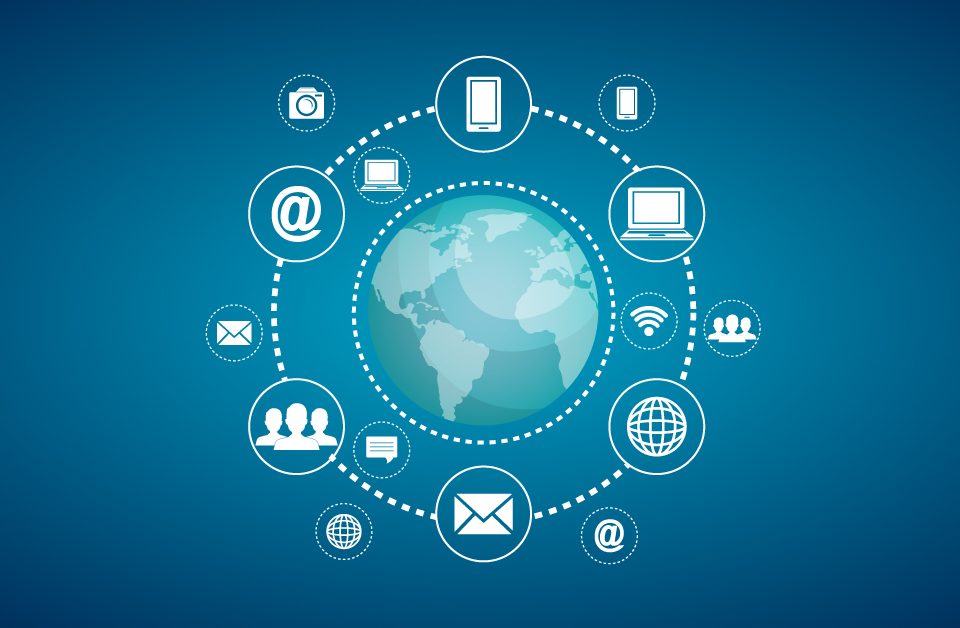How Digital Marketing And Predictive Modelling Are Reshaping The Election Campaign Landscape
It is quite surprising how the pandemic has made a massive disruption to the election schedules across continents and within countries like Bolivia, Ethiopia, Serbia, Iran, and even the significant US presidential elections. In India, The Election Commission has postponed a few Rajya Sabha and bye-elections due to the pandemic situation. The situation is demanding the ECs of different countries to hold the elections for now, but factually, it is practically impossible to prolong the elections much longer.
They must fix a later date in a 6-month gap because once the term of the assembly is over, it will naturally get dissolved. It is then necessary to impose a presidential rule that is not welcoming for the ruling or opposition of any states. Hence, the owner of constitutional machinery, EC, is checking all options not to postpone any elections after the term expiry.
When we decide to face the upcoming elections in this present circumstance where nobody is paying attention to anything other than the coronavirus, we can almost remove the Traditional Election and election campaign from our mindsets. Practically, it is also nearly impossible.
THE ELECTION CAMPAIGN
The pandemic has irresistibly made us ignore all public events, Jan Raksha Rallies, door-to-door knocking, selfies with favorite leaders, and controversial press releases, to mention a few. And “ social distancing” becomes the only act which has replaced all other events. Politicians then have no other choice than to adopt new changes. In fact, a few have already started new changes by conducting virtual Rallies, live-streamed speeches, teleconferencing, and Digital/Social-Media Marketing.
In the above traditional methods, almost all the leaders were enjoying a one-way-communication in their comfort zone. Nevertheless, political rallies and public events help them showcase their visions and image to their supporters and the general public.
Using social media
Social media and WhatsApp have emerged as crucial influencers, and political parties are making good use of these tools to reach out to the voters. Informal conversations between online users enable parties to pick up positive narratives and convert them into trending stories. The IT cells also monitor negative narratives and push counterstories to minimize the harm these negative sentiments can cause.
Online browsing patterns of users are tracked to pitch relevant political messages that are further fine-tuned according to the user engagement with these pitches. Depending on the uptake of the messages at a particular location, political parties are also creating narratives for location-specific rallies and the vital speeches they must deliver. And they also use historical information to predict their outcomes –predictive modeling.
Predictive Modelling
This is the means of analyzing past voting patterns and methods to predict future outcomes. A repository of data about previous elections will act for this by collecting data from several sources such as the Election Commission website, Government records, and other electoral historical documents.
And also, voters’ interest and personal data can be collected through social media platforms, mobile apps, and other possible means. Consequently, the new era of Digital Marketing, which they choose now because of the pandemic, may taste the bitterness of two-way communication if they don’t act wisely. However, they can only and efficiently run this new election campaign effectively with the support of a good Digital Marketing & Data-Science Analytics company.
Earlier, a very few major highly funded political parties depended upon Digital transformation enabling companies to plan the campaign strategies as far as smaller or regional parties are concerned. They depended on the traditional campaigns and a lower range of digital marketing. Usually, every party quickly acknowledges TV and Radio as the only media resources suitable for their one-way communication strategy, but now, things have changed.
The so-called millennial is not viewing TVs nor listening to news channels, neither interested in political debate on Televisions. The people are spending most of their time on social media platforms. Even the radio channels really discuss political issues on their shows and now more concentrated on entertainment.
The Captain Model
From a public health standpoint, in-person interactions may no longer be viable, but a segregated number of people could be considerably allowed to interact by using the captain model. Captain model is basically a model promoting voter participation using a strategic means of contact between people who belong to the same social network, such as friends, families, acquaintances, or neighbors.
In this model, individuals called “captains” commit to identifying and encouraging at least ten people they know to vote. In turn, the captains recruit other captains, thereby increasing the reach of these efforts even further. The estimated effect of the captain model was four times the size of the average door-to-door canvassing effort. While it is increasingly difficult to contact strangers, it is increasingly easy to reach their friends and acquaintances. The model also shows that phone calls, e-mails, and text messages between friends can be a powerful way of motivating voting.
So, every political party has to adopt newer plans and strategies with the help of newer technologies since the traditional campaign techniques won’t be working in the upcoming elections. Earlier, it was designed for bigger national/regional parties with considerable funds to materialize these things. But now, every party can use these because they can route all their available funds to the new method. The necessary steps to be taken;
Phase one
- Employ a proficient team who are specialized in digital marketing and data science and analytics. Major parties have their team, but others have to search through the vast software sector to find the best pick to materialize their plans and strategies.
- Prepare a six month to one year long plan and start all the social media channels (YouTube, Facebook, Instagram, Pinterest, LinkedIn, Twitter, etc.).
- Monitor the digital movements of candidates and opponents.
- Employ volunteers and donors through social media websites, online videos, and banner ads
- Have a well-planned supporters’ volunteer time by means of grassroots administration instruments.
- Make pages, groups, blogs, and other digital media active by frequently posting unique and captivating content.
- Review and update campaign contents posted online.
Phase two
- Create unique platforms and programs to encourage supporters to refer and inform others about your campaign, both online and offline.
- Engage your Facebook and YouTube platforms with exciting videos.
- Create time to respond to comments and questions of people online personally.
- Engage the use of mobile technology and data analytics, if possible, in the campaign operations.
- Set aside enough funds for the projects.
Phase three
- Time for full activation! This stage commonly starts somewhere in the range of 1 and 2 months before the period of voting. Start wrapping all campaigns up, either online or offline.
- Set up teams for turnout operations
- Begin early/non-attendant voting push.
- More fundraising appeals should be sent while emphasizing its urgency.
- Create an encouraging content for last-minute supporters through the social media platforms.
Final Push
- Field coordinators change to voter turnout among focused socio-economics and networks.
- Online promotions change to a blend of influence (to meet voters are still indecisive) and turnout-boosting. Importantly, ad targeting should be used to reach the expected voters.
- Encourage last-minute donation via Facebook, Twitter, and other related platforms.
- Send final appeals to appropriate sections on the Election, through social networking outlets, email, text messaging, Twitter, campaign website, telegram, and all other channels.
- Ensure you send followers a follow-up message.
During Pandemic time, South Korea has successfully run the election campaign and polling. Apart from the above election campaign challenges, they had to face the following at the polling time.
Challenges
- One of the most significant issues has been how to allow the enormous number of people in quarantine across the country to head to the polls.
- They have been under strict instructions to only vote at certain times and in designated polling stations.
- They could leave their homes from 17:20 until 19:00 on the day of polling; they couldn’t use public transport and could only walk or use their car
- They had to call health officials when they returned to their homes; otherwise, we were told, police officers would be dispatched to find them.
- People outside the country or the location cannot come and vote, and the people in quarantine also could not.
Precautions
The challenge for officials was how to avoid the risk of infection. They decided that;
- Citizens at voting stations were required to take body temperature tests, rub their hands with sanitizer, and put on disposable plastic gloves. But “three-feet-distancing” might not appear to separate voters even though stickers on the ground warned people to maintain their distance
- If someone had a temperature above 37.5C, they would be taken to a separate voting area and kept separate
- Patients being treated for coronavirus were given the option of mailing their ballot.
- But polling booths were also set up outside residential centers, with precautionary measures for hundreds of people with mild symptoms. The booth was outside to help prevent the spread of infection.
- The same method can be applied to our upcoming elections as well in India.
In a nutshell, the smaller or regional political parties are definitely going to face huge setbacks or challenges in the upcoming election campaigns as their options are being shut down by COVID-19. They cannot rely on the traditional methods, and now,not even getting much attention from the younger generation who are the backbone or higher percentage of the Indian population.
Hence, the best option they hugely rely on is the social media, but typical intrusion to the social media will not work here because the data flow is massive; regular posts and videos may not get noticed by that target audience. Also, the new aged viral techniques like Trolls and controversial videos, will not stick longer because they fade or vanish from people’s minds when they get the next subject trolls or videos.
About Author
Sooraj Mohanan T.E. leads NDZ in setting and implementing new strategies in information technology. He has been engaged with NDZ for the past 13 years and played a major role in preparing and handling information technology (IT) strategy, supporting NDZ’s goals and objectives. He also possesses a keen interest in keeping up with the changing political scenario of the world and how our technology can be leveraged by them to create a dynamic and impactful campaign result.




